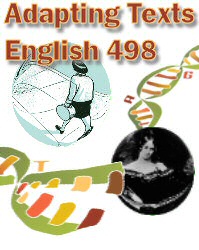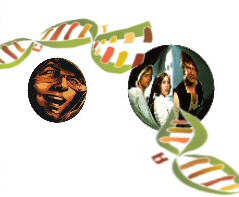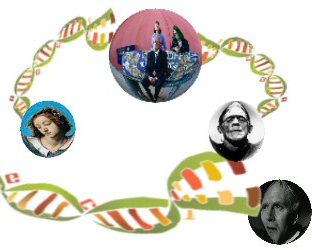|
|
Critical Adaptation Project Grading
An 88- to 100-Point Project (3.5-4.0, A Range)
- Has a substantive thesis that is fully explored and supported, the project presents a well-argued discussion of source and adaptations that is defendable, clearly explained, and supported by evidence.
- Shows substantial depth, richness and complexity of thought.
- Expresses ideas clearly and commands the reader’s attention.
- Demonstrates clear and logical organization; relationship among pages is easily discernible, and all navigation elements function.
- Uses adaptation theory to develop argument; theory is integral component of the project.
- Includes all required elements: “About this Site,” analysis, and annotated sources, links and credits.
- Is fully developed and detailed with arguments supported by persuasive reasoning, well chosen clips, images, sounds, links, and references to theory, source, and adaptations; there is an appropriate balance between providing evidence and analyzing that evidence.
- Integrates text and audio-visual elements thoughtfully, with all images, links, and clips clearly complementing the analysis.
- Offers clear citation of all ideas and words not the author’s own.
- Has superlative page design: easily viewable text and images, skillful use of color, no clutter.
- Has a sophisticated style (remarkable variety of sentence pattern, smooth transitions between ideas, superior control of diction).
- Has few, if any, minor errors in grammar, usage or mechanics.
A 63- to 87-Point Project (2.5-3.4, B Range)
- Has a clear thesis, but project may not fully explore relationship between source and adaptations; the thesis may be well-argued, but could use additional support throughout the project; or the thesis may be identifiable, but not sharply focused.
- Shows some depth and complexity of thought.
- Expresses ideas clearly.
- Demonstrates effective organization; site has clear organizational scheme, but analysis offered on specific pages may stray from the defined page topic; a few navigation elements may not function or may be absent.
- Uses adaptation theory to shape or develop argument but references to theory may seem tacked on rather than closely connected to the author’s claims.
- Includes all required elements: “About this Site,” analysis, and annotated sources, links and credits.
- Is well developed with sensible reasoning, well chosen clips, images, sounds, links, and references to theory, source, and adaptations; however, some evidence may detract from the analysis and some ideas might not be
fully explored.
- Demonstrates balance between evidence and analysis for the most part, but balance may be weak in places.
- Integrates text and audio-visual elements effectively overall, but relationship between these components may be unclear on occasion.
- Properly cites source material, but may have errors in citation format.
- Has strong page design: clear text and images, effective use of color, minimal clutter.
- Has an effective style (some variety of sentence patterns, transitions between ideas, accurate diction).
- Has few errors in grammar, usage or mechanics.
A 38- to 62-Point Project (1.5-2.4, C Range)
- Has a thesis that may not be entirely clear or supported; project may mention many connections among source and adaptations but define and/or discuss few.
- Shows insufficient awareness of the complexity of issues addressed; may offer a simplistic discussion of the source and adaptations.
- Communicates ideas clearly for the most part, but may have some lapses in clarity.
- Has a recognizable organizational pattern, but navigation may be confusing, and some pages may not fit site’s overall purpose.
- Demonstrates little engagement with adaptation theory, offering a few citations of theoretical texts, but not tying the references to the analysis in a clear manner.
- Contains the critical analysis of source and adaptations, but “About this Site” section may be absent or annotated sources, links and credits section may not contain annotations or required minimum number of links.
- Is unevenly developed; writers may offer sufficient reasoning, links, clips, images, or references to theory, source, and adaptations for some of the ideas but not for others.
- Demonstrates some balance between evidence and analysis.
- Integrates text and audio-visual elements in the analysis, but without consistently demonstrating a connection between these elements.
- Cites the majority of source material, but occasionally material may be clearly cited but not referenced in parentheses.
- Has adequate page design: satisfactory text and images, adequate use of color, some page clutter.
- Has an adequate style (limited variation in sentence patterns, transitions between most ideas, diction accurate for the most part).
- Has some errors in grammar, usage or mechanics, but demonstrates basic control of these areas.
An 18- to 37-Point Project (.7-1.4, D Range)
- Has an unclear thesis; project identifies texts and meets basic word requirements, but offers no meaningful discussion of the relationship between the source and adaptations.
- Lacks focus or demonstrates confused, stereotyped or simplistic thinking; writer may demonstrate no overall conception of the issues raised by the texts.
- May not communicate ideas clearly.
- Is ineffectively organized, with no logical relationship among pages and unclear navigation.
- Demonstrates misunderstanding of adaptation theory, including references that have no connection to the writer’s ideas.
- Contains analysis page(s), but is missing one required section of site.
- May not support generalizations with adequate or appropriate reasoning, links, images, clips, or textual references; may provide details without generalizations.
- Demonstrates little relationship between evidence and analysis.
- Uses text and audiovisual elements, but with little connection between the two.
- Offers unclear citations of work not the author’s own.
- Has weak page design: some confusing text and images, poor use of color (glaring), page clutter.
- Has stylistic weaknesses (no variety of sentence patterns, few transitions, imprecise diction).
- Has occasional major errors in grammar, usage or mechanics or frequent minor errors that interfere in the reader's understanding of the analysis.
A 0- to 17-Point Project (0-.6, F Range)
- May be deliberately off-topic and demonstrate no understanding of the source or adaptations.
- Does not communicate ideas clearly.
- Lacks coherent organization, site is difficult or impossible to navigate.
- Does not engage adaptation theory.
- Analysis section is scant, and other site elements may be absent or entirely inadequate.
- Shows no development of ideas; may simply summarize texts.
- Has no connection between text and audiovisual elements.
- Represents another writer’s work as the author’s own.
- Has incoherent page design: unclear text and images, no sense to color choice, clutter makes page incomprehensible.
- Has an incoherent style (difficulties with sentence structure, pattern of diction errors).
- Has pervasive pattern of errors in grammar, usage and mechanics that renders the analysis unreadable.
Last Update: 6/6/06
|



